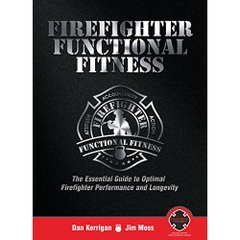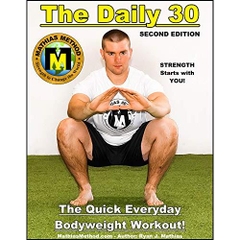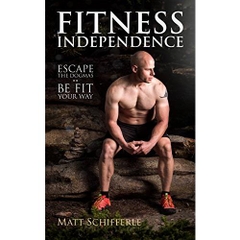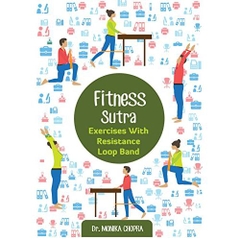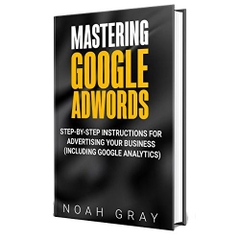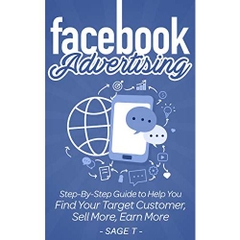-
-
-
Tổng tiền thanh toán:
-
-
Thông tin
-
Tìm sách theo yêu cầu
This is Pilates as you’ve never seen it before.
With detailed descriptions, step-by-step instruction, and stunning full-color anatomical illustrations,Pilates Anatomy takes you inside the exercises and programs that will tone the body, stabilize the core, improve balance, and increase flexibility. Using the original mat work of Joseph Pilates, you’ll see how key muscles are used, how variations and minor adjustments can influence effectiveness, and how breathing, alignment, posture, and movement are all fundamentally linked.
Choosing from over 45 exercises, you can target a particular body region and delve deeper to stretch, strengthen, and finely coordinate specific muscles. You’ll also find techniques for breathing, concentration, and self-awareness for a unique exercise experience that enhances your mind and your body.
Product Details
Paperback: 216 pages
- Publisher: Human Kinetics; 1 edition (March 10, 2011)
- Language: English
- ISBN-10: 0736083863
- ISBN-13: 978-0736083867
- Product Dimensions: 10 x 7.1 x 0.5 inches
- Shipping Weight: 1.2 pounds (View shipping rates and policies)
- Average Customer Review: 4.7 out of 5 stars See all reviews (60 customer reviews)
- Amazon Best Sellers Rank: #19,766 in Books (See Top 100 in Books)
- #3 in Books > Health, Fitness & Dieting > Exercise & Fitness > Pilates
- #57 in Books > Health, Fitness & Dieting > Exercise & Fitness > Yoga
- #62 in Books > Medical Books > Basic Sciences > Anatomy
Editorial Reviews
Review
"Karen and Rael are two of the most respected names in the Pilates field, and Pilates Anatomy brings together their clarity and passion. This book is at the top of my list." -- Nora St. John, Education Program Director, Balanced Body University
"There is a wealth of information in Pilates Anatomy. The Pilates world is fortunate to have this resource." -- Peter Davis, Cofounder of IDEA Health and Fitness Association and Inner IDEA
“Pilates Anatomy by Rael Isacowitz and Karen Clippinger is an exceptionally well-mapped journey into the muscular anatomy and kinesiology of Pilates exercises. A must-have anatomy book for any serious student of Pilates, Pilates Anatomy will surely appeal to anyone interested in how muscle groups work together in exercise.” -- Marguerite Ogle, About.com/Pilates
About the Author
Rael Isacowitz is a world-renowned practitioner and teacher of Pilates. He has over 30 years of Pilates achievement and is a prominent lecturer and teacher at symposiums, universities, and studios around the globe.
Rael earned his bachelor of education degree from the Wingate Institute, Israel, and holds a master of arts degree in dance from the University of Surrey, England. During his career he has worked with numerous Olympians and many professional athletes and dancers.
Rael’s early Pilates teachers included Alan Herdman and thereafter several of the first-generation Pilates teachers (known as the Elders). To Kathy Grant, Ron Fletcher, Romana Kryzanowska, Eve Gentry, and Lolita San Miguel, Rael owes the inspiration and friendship that have guided his career.
Rael has mastered all levels of the Pilates repertoire and is noted for his unique athleticism and passion for teaching as well as his synthesis of body, mind, and spirit. In 1989, he founded Body Arts and Science International (BASI Pilates), which has developed into one of the foremost Pilates education organizations in the world. At present, BASI Pilates is represented in 20 countries.
Rael has authored the definitive book on Pilates (Pilates, Human Kinetics), published a series of training manuals on all the Pilates apparatus, produced DVDs, designed the revolutionary Avalon equipment, and created Pilates Interactive, the groundbreaking Pilates software. He is a regular contributor to several industry publications. Creativity and energy suffuse his work. For Rael, teaching Pilates is the ultimate gift. Isacowitz resides in Hood River, Oregon.
Karen Clippinger is a professor at California State University at Long Beach, where she teaches functional anatomy for dance, body placement, Pilates, and other dance science courses. She is also on the faculty for Body Arts and Science International (BASI Pilates), where she teaches Pilates certification programs. Furthermore, she teaches continuing education courses for BASI Pilates and other prominent organizations.
Ms. Clippinger holds a master’s degree in exercise science. Her lifelong passion is to make anatomical and biomechanical principles accessible so that people can better understand their bodies, improve technique, and prevent injuries. Her textbook, Dance Anatomy and Kinesiology, exemplifies this mission; reviewers have lauded the book for its combination of scientific comprehensiveness and practical wisdom.
Before joining academia, Clippinger worked as a clinical kinesiologist for 22 years at Loma Linda University Medical Center and several sports medicine clinics in Seattle. She has worked with hundreds of professional dancers and elite athletes and consulted for the U.S. Weightlifting Federation, U.S. race walking team, Pacific Northwest Ballet, and California Governor's Council on Physical Fitness and Sports. During that time she was drawn to Pilates because of its tremendous versatility and profound benefits for people of varying abilities and aspirations.
Clippinger is a renowned presenter in Pilates, dance, anatomy, and biomechanics. She has given more than 375 presentations throughout the United States and in Australia, Canada, England, Japan, New Zealand, and South Africa. Clippinger was also an exercise columnist for Shape magazine for four years. She resides in Long Beach, California.
Most Helpful Customer Reviews
47 of 49 people found the following review helpfulBy Amazon Customer on May 30, 2011
Format: Paperback
Comment Was this review helpful to you? YesNoPilates has splintered into many "schools or approaches," much like yoga, leaving some of us confused as to which version is closest to the original. This book is as close to the original as is possible, so you can relax in the knowledge that reading it will give you an in-depth understanding of the original intent. That understanding will serve you well regardless which variation of the technique you later wish to pursue or, if you are already immersed in a variation, you will gain a deeper understanding of how your program may vary and why.
It's no surprise that this is a beautifully illustrated and well-written guide to how Pilates affects our musculature considering that one of the authors, Rael Isacowitz, has studied for three decades with the first-generation of students who had been directly taught by Joseph and Claire Pilates. Furthermore, this text has been based on one of two books written by Joseph Pilates himself, Return to Life Through Contrology.
This direct-lineage is important if you value authenticity. Pilates is wildly popular because it works. Getting information from the source is crucial to understanding how and why it works and making it work more effectively. Students of Reiki know that their teachers will authenticate how many "removes" they are from the originator of the techniques. Knowing you are getting information and counsel from someone who is only "two removes" from Pilates himself is important in the same way.
The other author, Karen Clippinger, brings over three decades of experience in teaching anatomy, devoting more than half of that time to bringing Pilates into academic and rehabilitation centers. That these two incredibly experienced and talented people would come together to develop this book is a blessing to teachers and students of Pilates because it does not exclude any varying interpretation of Pilates; it provides a foundation for and an enhancement of each.
If you don't include an understanding of anatomy in your teaching or practice of Pilates, you undermine its effectiveness. With a solid appreciation of how each movement utilizes and affects specific muscle groups, you can maximize your practice and minimize injuries. This book allows you to see those groups and that helps you visualize your movements in a way that mere words cannot achieve.
What I found particularly useful was understanding the six key principles: breathing, concentrating, centering, controlling, being precise, and flowing from one movement into another. After all, Pilates called his system contrology so knowing how to control or make the connection between your mind and body is essential.
Be sure to read the discussion on the Science of Breathing because, unless you breath properly, you are essentially wasting your time in any exercise. You need to oxygenate your muscles to allow them to perform well, and proper breathing will make you feel as healthier and exercise more effectively. Students of yoga and meditation already know how important disciplined breath is and will appreciate the emphasis and explanations in this book.
As I age, I find it increasing difficult to maintain a youthful posture. I slump and sag with stress and fatigue and long for more upright posture and smoother, more graceful carriage. Iscaowitz and Clippinger cannot guarantee that I get back to that state, but their discussion of what proper alignment of the spine and the function of core muscles surely puts me firmly on the path back to a healthier and happier state of being.
Make no mistake, this is a book for mat work. I own a Pilates machine, but this book is going to have me back on the floor as well. You will see exactly how you should place and align your body. They tell you how to execute each movement, which muscles are directly affected and which muscles offer secondary support to the movement. There are lists of clues to making each movement more effective as well as suggestions for modifications and variations. I enjoyed the Exercise Notes in particular because the notes provide the context and purpose of each movement which helps someone like me who follows instruction much better if I know the rationale behind them. The authors not only discuss what to do, how to do it, but why doing it is important.
I also liked the section on how to customize your own Pilates program and the Exercise Finder at the end of the book. The Exercise Finder helps you understand which of the modern movements were not in the original text of Joseph Pilates in case that is important to you.
This book complements everything I've learned as a Reiki Master and as beginning student of yoga because its emphasis is on understanding and respecting your body, breath, and the mind-body connection. I consider this an important addition to my library and am grateful I was granted a chance to review it through the Library Thing's Early Reviewer program.
Human Kinetics, the publisher, has once again gathered an impressive graphic arts team and the illustrations of Molly Borman clarify and communicate the information necessary to understand how the movements involve and impact the body. From the early general discussions of breathing and skeletal structures to the specific movements, the illustrations make the instructions and cautions come alive. If there are specific parts of your body where you want to effect change these illustrations will help you visualize the process and results. That alone makes the book worth more than its modest price. Being able to know how what you are doing is actually working makes this book invaluable
It's no surprise that this is a beautifully illustrated and well-written guide to how Pilates affects our musculature considering that one of the authors, Rael Isacowitz, has studied for three decades with the first-generation of students who had been directly taught by Joseph and Claire Pilates. Furthermore, this text has been based on one of two books written by Joseph Pilates himself, Return to Life Through Contrology.
This direct-lineage is important if you value authenticity. Pilates is wildly popular because it works. Getting information from the source is crucial to understanding how and why it works and making it work more effectively. Students of Reiki know that their teachers will authenticate how many "removes" they are from the originator of the techniques. Knowing you are getting information and counsel from someone who is only "two removes" from Pilates himself is important in the same way.
The other author, Karen Clippinger, brings over three decades of experience in teaching anatomy, devoting more than half of that time to bringing Pilates into academic and rehabilitation centers. That these two incredibly experienced and talented people would come together to develop this book is a blessing to teachers and students of Pilates because it does not exclude any varying interpretation of Pilates; it provides a foundation for and an enhancement of each.
If you don't include an understanding of anatomy in your teaching or practice of Pilates, you undermine its effectiveness. With a solid appreciation of how each movement utilizes and affects specific muscle groups, you can maximize your practice and minimize injuries. This book allows you to see those groups and that helps you visualize your movements in a way that mere words cannot achieve.
What I found particularly useful was understanding the six key principles: breathing, concentrating, centering, controlling, being precise, and flowing from one movement into another. After all, Pilates called his system contrology so knowing how to control or make the connection between your mind and body is essential.
Be sure to read the discussion on the Science of Breathing because, unless you breath properly, you are essentially wasting your time in any exercise. You need to oxygenate your muscles to allow them to perform well, and proper breathing will make you feel as healthier and exercise more effectively. Students of yoga and meditation already know how important disciplined breath is and will appreciate the emphasis and explanations in this book.
As I age, I find it increasing difficult to maintain a youthful posture. I slump and sag with stress and fatigue and long for more upright posture and smoother, more graceful carriage. Iscaowitz and Clippinger cannot guarantee that I get back to that state, but their discussion of what proper alignment of the spine and the function of core muscles surely puts me firmly on the path back to a healthier and happier state of being.
Make no mistake, this is a book for mat work. I own a Pilates machine, but this book is going to have me back on the floor as well. You will see exactly how you should place and align your body. They tell you how to execute each movement, which muscles are directly affected and which muscles offer secondary support to the movement. There are lists of clues to making each movement more effective as well as suggestions for modifications and variations. I enjoyed the Exercise Notes in particular because the notes provide the context and purpose of each movement which helps someone like me who follows instruction much better if I know the rationale behind them. The authors not only discuss what to do, how to do it, but why doing it is important.
I also liked the section on how to customize your own Pilates program and the Exercise Finder at the end of the book. The Exercise Finder helps you understand which of the modern movements were not in the original text of Joseph Pilates in case that is important to you.
This book complements everything I've learned as a Reiki Master and as beginning student of yoga because its emphasis is on understanding and respecting your body, breath, and the mind-body connection. I consider this an important addition to my library and am grateful I was granted a chance to review it through the Library Thing's Early Reviewer program.
Human Kinetics, the publisher, has once again gathered an impressive graphic arts team and the illustrations of Molly Borman clarify and communicate the information necessary to understand how the movements involve and impact the body. From the early general discussions of breathing and skeletal structures to the specific movements, the illustrations make the instructions and cautions come alive. If there are specific parts of your body where you want to effect change these illustrations will help you visualize the process and results. That alone makes the book worth more than its modest price. Being able to know how what you are doing is actually working makes this book invaluable
28 of 30 people found the following review helpfulBy Susanna Hutcheson TOP 500 REVIEWER on April 23, 2011
Format: Paperback
I love anatomy books --- especially the ones that tell me what muscles I work doing certain exercises or movements. To the already impressive lineup of anatomy books put out by this exceptional fitness publisher is now added Pilates Anatomy by Rel Isacowitz and Karen Clippinger.
Pilates Anatomy presents a visual perspective on correct alignment, posture, and movements. You'll get an inside view of your workout. It includes 213 illustrations with 96 in full-color and step-by-step instructions for 46 of the most effective mat exercises for building a stronger, more articulate body.
The contents include:
Chapter 1. Six Key Principles of Pilates
Chapter 2. Spine, Core, and Body Alignment
Chapter 3. Muscles, Movement Analysis, and Mat Work
Chapter 4. Foundation for a Mat Session
Chapter 5. Abdominal Work for Movement and Stabilization
Chapter 6. Fine Articulation for a Flexible Spine
Chapter 7. Bridging for a Functional Spine
Chapter 8. Side Exercises for an Effective Core
Chapter 9. Extensions for a Strong Back
Chapter 10. Customizing Your Pilates Program
The book has great instructions on how to do each exercise and what muscles are being worked. Several views are included -- the start position, the movement and a larger graphic showing the muscles worked.
The execution of the exercise is provided step-by-step. The targeted muscles are described along with the accompanying muscles. In addition, technique cues are given along with important exercise notes and additional graphics when needed to provide a full explanation.
This book is priceless in planning your palates workout. It's a must-have guide and I highly recommend it to you.
-- Susanna K. Hutcheson
- Link: http://www.amazon.com/Pilates-Anatomy-Rael-Isacowitz/dp/0736083863
Pilates Anatomy presents a visual perspective on correct alignment, posture, and movements. You'll get an inside view of your workout. It includes 213 illustrations with 96 in full-color and step-by-step instructions for 46 of the most effective mat exercises for building a stronger, more articulate body.
The contents include:
Chapter 1. Six Key Principles of Pilates
Chapter 2. Spine, Core, and Body Alignment
Chapter 3. Muscles, Movement Analysis, and Mat Work
Chapter 4. Foundation for a Mat Session
Chapter 5. Abdominal Work for Movement and Stabilization
Chapter 6. Fine Articulation for a Flexible Spine
Chapter 7. Bridging for a Functional Spine
Chapter 8. Side Exercises for an Effective Core
Chapter 9. Extensions for a Strong Back
Chapter 10. Customizing Your Pilates Program
The book has great instructions on how to do each exercise and what muscles are being worked. Several views are included -- the start position, the movement and a larger graphic showing the muscles worked.
The execution of the exercise is provided step-by-step. The targeted muscles are described along with the accompanying muscles. In addition, technique cues are given along with important exercise notes and additional graphics when needed to provide a full explanation.
This book is priceless in planning your palates workout. It's a must-have guide and I highly recommend it to you.
-- Susanna K. Hutcheson
XEM CHI TIẾT TẠI AMAZON.COM
- Thông tin chi tiết
- Mục lục
- Đánh giá & bình luận của người mua
- Những cuốn sách cùng chủ đề hoặc có liên quan
Tại web chỉ có một phần nhỏ các đầu sách đang có nên nếu cần tìm sách gì các bạn có thể liên hệ trực tiếp với Thư viện qua Mail, Zalo, Fanpage nhé
Đăng ký nhận tin qua email
Hãy đăng ký ngay hôm nay để nhận được những tin tức cập nhật mới nhất về sản phẩm và các chương trình giảm giá, khuyến mại của chúng tôi.

